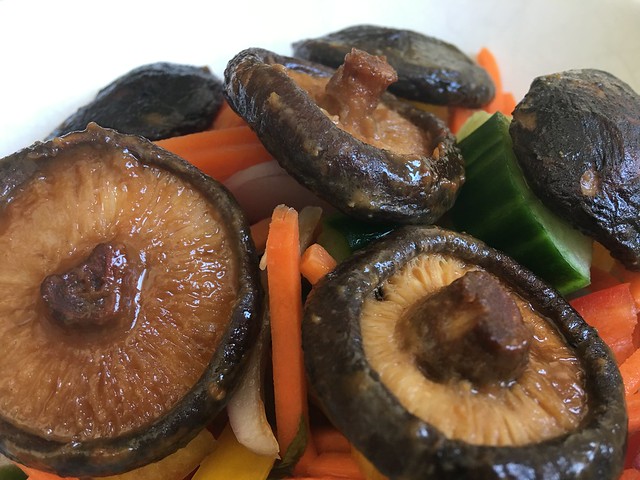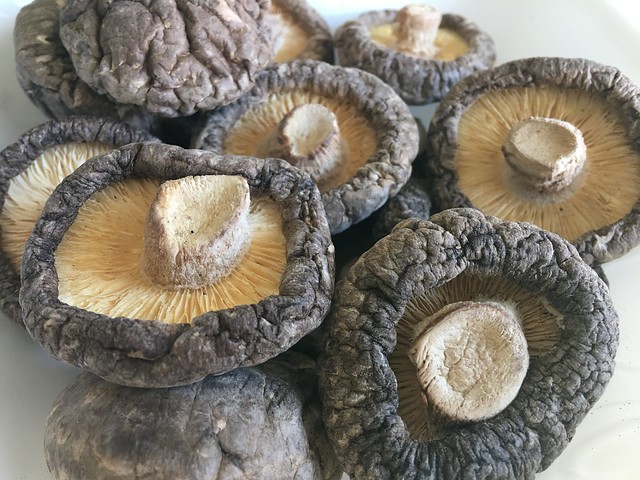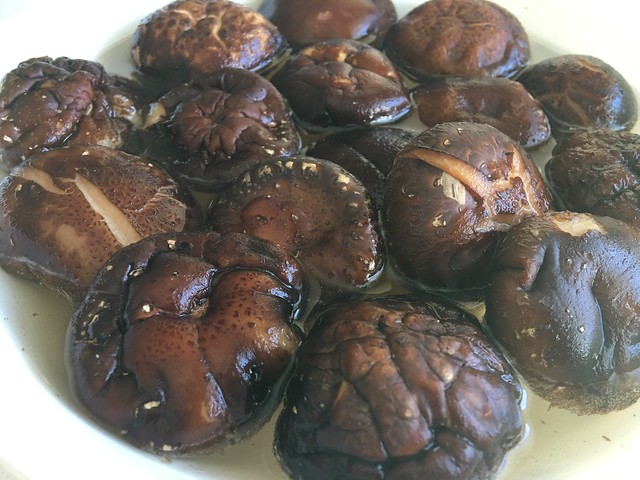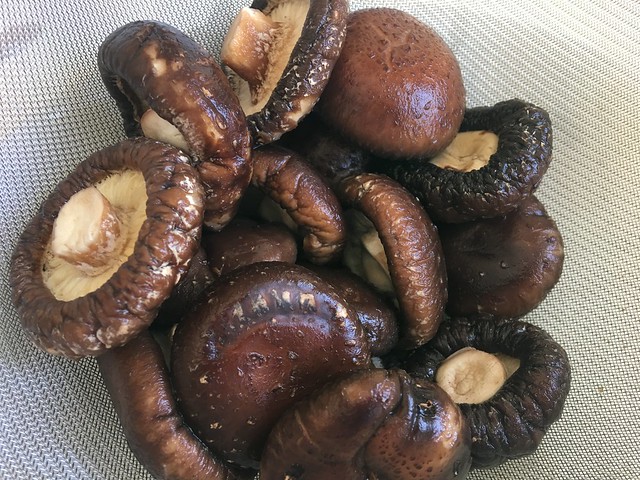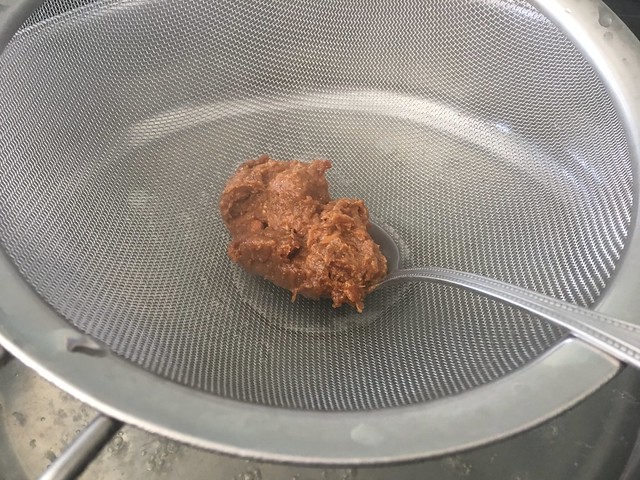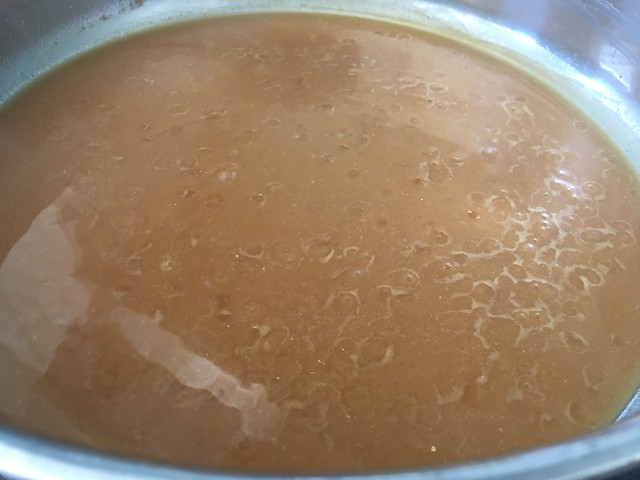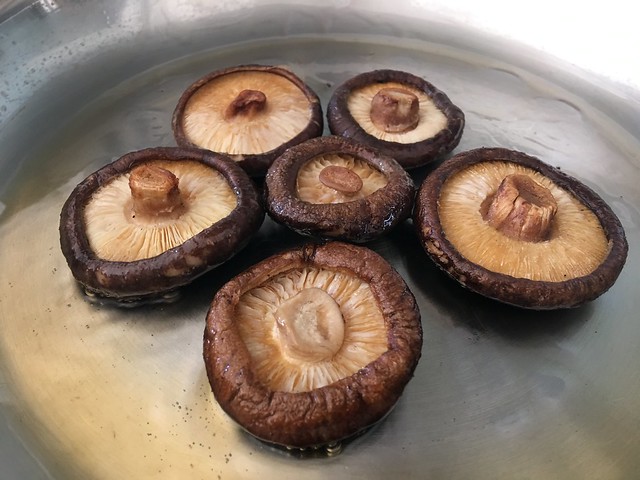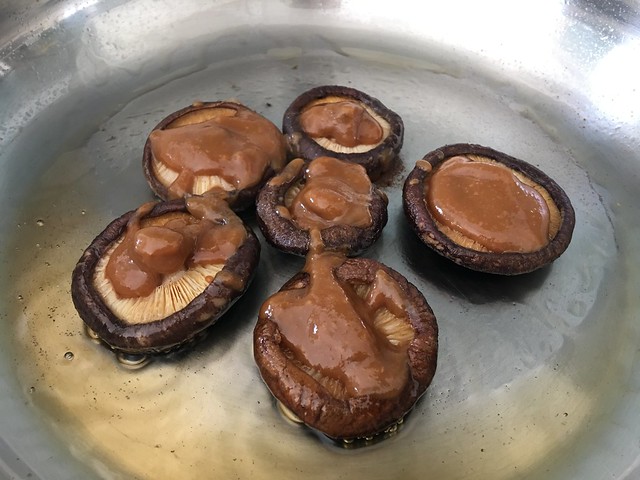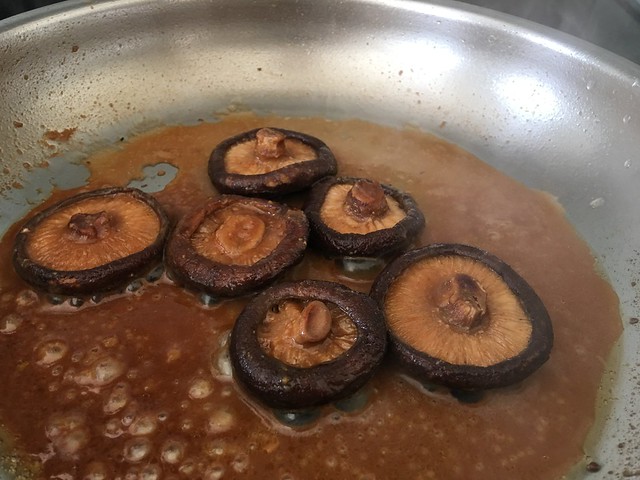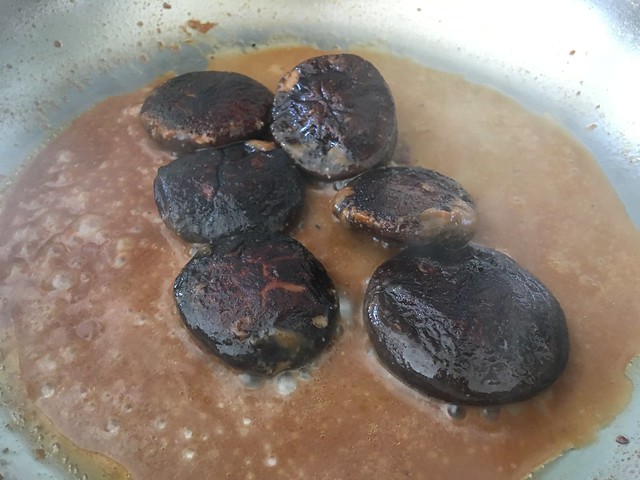You are here
Shiitake Mushrooms Glazed in Miso Reduction Recipe - Jeong Kwan, Chef's Table
In season 3 of Chef's Table on Netflix, episode one features the life and culinary creations of Jeong Kwan, a nun who is inspiring top chefs around the world with her mindful and compassionate approach to nourishing the body and spirit with plant foods.
Toward the end of this feature on Jeong Kwan and Korean temple cuisine, she recounts the story of her elderly father who came to stay with her at the ChunJiNam hermitage in southwest Korea, wanting to see for himself how his daughter could choose such an ascetic life for decades.
At one point during his stay, Jeong Kwan's father asked her how he could have energy without meat? To this, Jeong Kwan made him a simple plate of sautéed shiitake mushrooms, which she asked him to eat by a nearby river. Exclaiming that it was even better than meat, Jeong Kwan's father told her that he could now return home, knowing that his daughter was in a wonderful place. He passed away peacefully in his sleep a week later at the age of 70.
Learning about Jeong Kwan's existence has been inspiring in many ways and has made me curious about Korean temple food. As she made the same plate of sautéed shiitake mushrooms for Chef's Table, I was mesmerized by a sauce that she added to the mushrooms. I can't be sure how she made this sauce, as I haven't been able to find a recipe, but my best guess is that it's a miso reduction, or as Koreans would call it, a daen jahng reduction - miso and daen jahng, are the same thing, fermented soy bean paste that Japanese and Korean people have revered and used as staples for centuries.
These are the steps that I followed in an attempt to re-create Jeong Kwan's sautéed mushroom dish:
1. Soak dried shiitake mushrooms gill-side down in a bowl of cold water for two hours.
2. Drain well and gently pat dry mushrooms with paper towels to remove excess water.
3. Use the underside of a spoon and a stainless steel strainer to press the goodness in one heaping tablespoon of fermented soy bean paste into one cup of simmering unsalted vegetable broth - if you don't have broth, you can use water leftover from soaking the mushrooms. Essentially, this is creating a cup of miso soup. Stir regularly while it simmers until it reduces to a thick gravy-like consistency.
4. In a pan over low to low-medium heat, sauté shiitake mushrooms with a little sesame oil, just one to two minutes on each side. When both sides are slightly browned, turn the mushrooms gill-side up and add a dollop of miso reduction to each mushroom and let cook for another 30 seconds.
5. Finish by adding another cup of unsalted broth or leftover soaking water over the mushrooms, then turn the mushrooms over and let them simmer for another minute or so.
6. Serve as you feel called to do so. Here, I added the glazed mushrooms over a bowl of fresh vegetables to make a simple salad. Next time, I imagine I'll add them to a bowl of steamed rice. The miso reduction is boldly flavourful, so my feeling is that these mushrooms are best paired with unseasoned vegetables or a grain dish like rice or quinoa.
Please keep in mind that using a miso reduction and preparing the shiitake mushrooms as noted here are purely from my own experimenting, and I would guess there is an easier way to re-create Jeong Kwan's dish. Perhaps reducing the miso is unnecessary, and one can add the miso soup directly to the mushrooms to deglaze them after they have sautéed in sesame oil. My only reason for using a miso reduction is that this is what Jeong Kwan appeared to use on Chef's Table. I could be entirely wrong about her sauce being miso-based.
If you give this recipe or a variation of it a try, please consider sharing your experience and thoughts in the comments section below or at our Instagram or Facebook pages? I'd love to see what some in our readership come up with. And if you happen to post a photo of what you make at your own social media pages, I would appreciate you tagging me so that I can have a look and learn.
To bring this post to a close, here is an excerpt from Jeff Gordinier's New York Times article about his visit with Jeong Kwan:
Kwan believes that the ultimate cooking — the cooking that is best for our bodies and most delicious on our palates — comes from this intimate connection with fruits and vegetables, herbs and beans, mushrooms and grains. In her mind, there should be no distance between a cook and her ingredients. ‘‘That is how I make the best use of a cucumber,’’ she explains through a translator. ‘‘Cucumber becomes me. I become cucumber. Because I grow them personally, and I have poured in my energy.’’ She sees rain and sunshine, soil and seeds, as her brigade de cuisine. She sums it up with a statement that is as radically simple as it is endlessly complex: "Let nature take care of it."
If you don't mind a bit of colourful language from other featured chefs, you can catch a glimpse of Jeong Kwan in the following trailer for season 3 of Chef's Table on Netflix:
Addendum on April 20, 2017:
Two alternative ways of cooking shiitake mushrooms that are easier than the method described above:
1. Sauté mushrooms in sesame oil for one to two minutes per side, then add a small amount of broth to deglaze the pan, then add soy sauce and allow to simmer until the mushrooms are lightly coated by a natural sauce.
2. Sauté mushrooms in sesame oil for one to two minutes per side, then add a small amount of miso soup (made by combining miso with hot water), then allow to simmer until the mushrooms are coated by a natural miso sauce.







